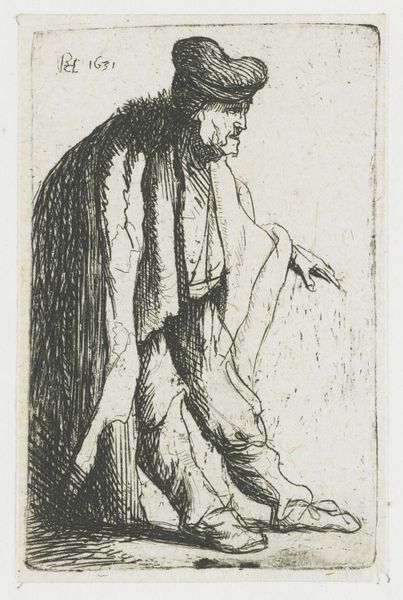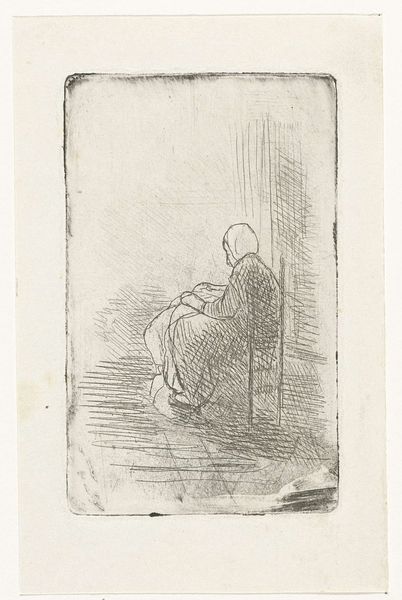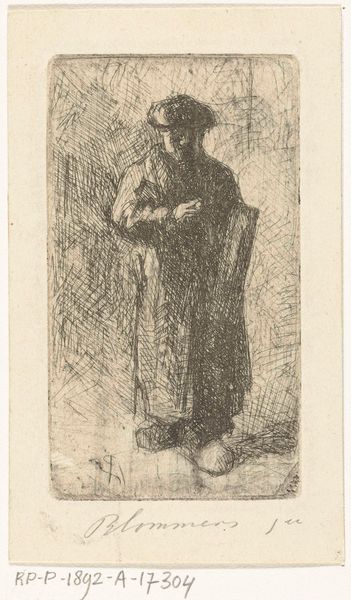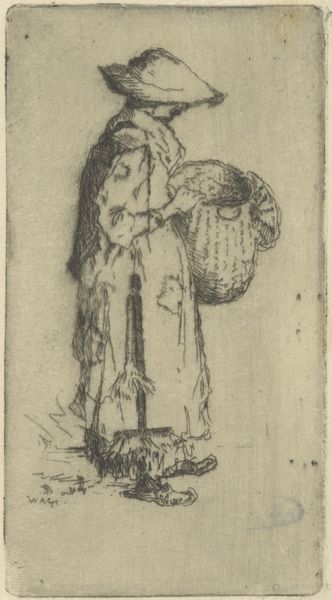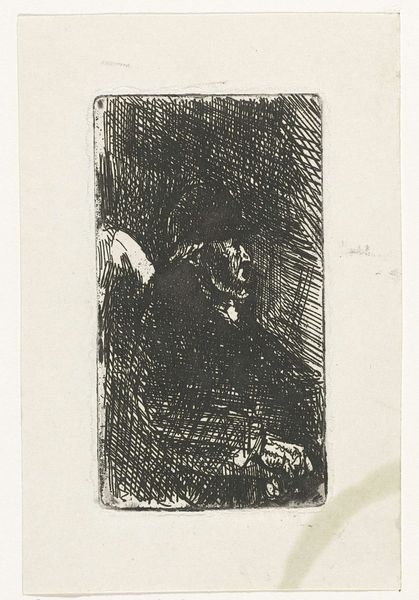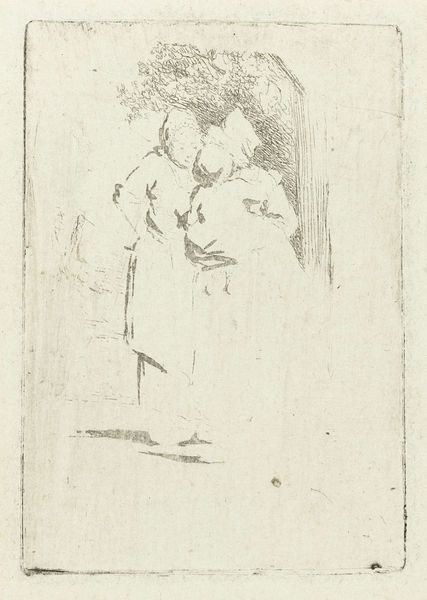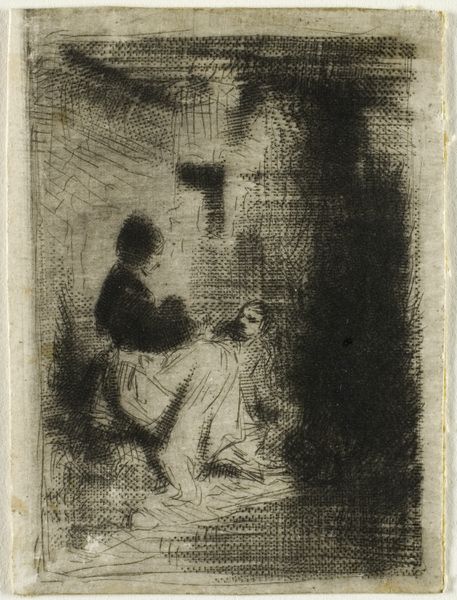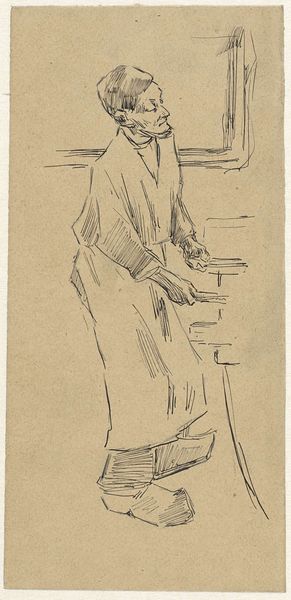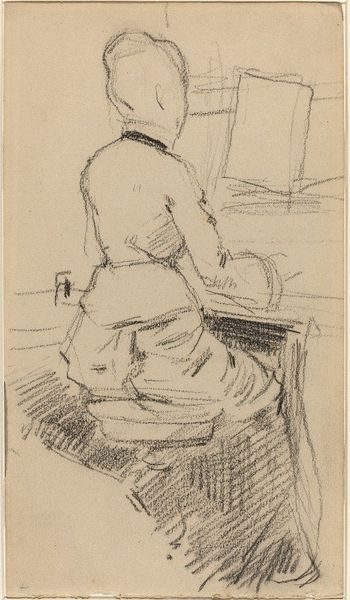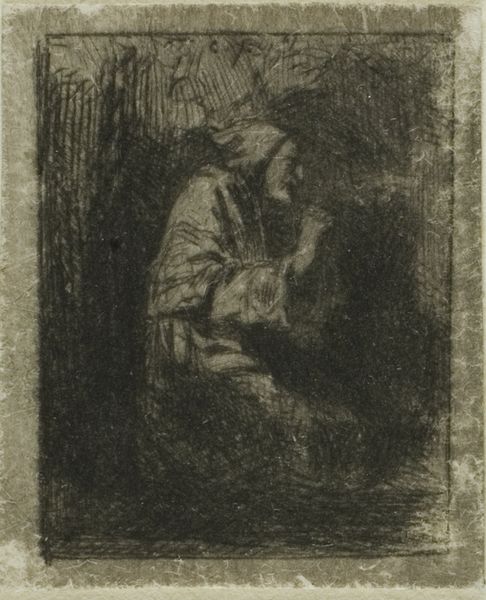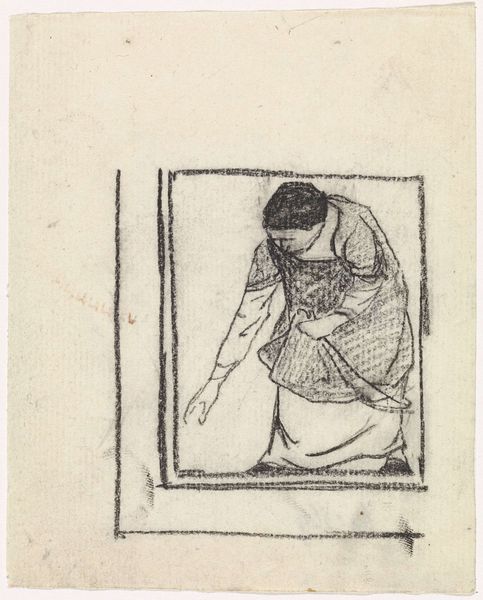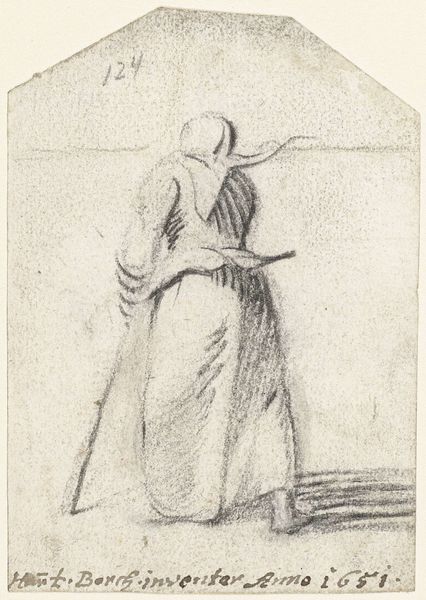
print, etching
#
portrait
# print
#
etching
#
figuration
#
realism
Copyright: National Gallery of Art: CC0 1.0
Editor: This is David Young Cameron’s etching, "Begging," from 1892. It's a small print, dominated by the figure of a man kneeling. The heavy shading makes him seem weighed down. What stands out to you about this piece? Curator: Immediately, the materiality of the etching process comes to mind. Think about the labor involved – the physical act of incising the image onto the metal plate. Notice the artist’s mark-making, how the density and direction of the lines create form and texture, how Cameron builds the figure out of careful accumulation. Editor: So you are drawn to the… the “how” of its creation, more than its subject? Curator: Not exclusively, but it's vital. How does the means of production inform the work's meaning? “Begging” raises issues of class and labour in the Victorian period, certainly, and what better to showcase these inequalities than through print, a medium originally born out of popular need for mass-reproducible imagery, which traditionally has its roots in labor? Does the use of etching, with its connotations of fine art printmaking, change your reading of the figure? Editor: That's an interesting way to consider it. He's depicting poverty using a relatively 'high-art' method... it creates a tension. It doesn’t seem intuitive. Curator: Precisely. Etching creates an original piece, with unique markers due to its manual labor intensive form, however due to print capability it remains endlessly reproducible. Who consumes these images, and what is the economic transaction in its consumption, whether the art is centered around wealth and its signifiers, or lack thereof? How does this accessibility contrast with the lived reality of those depicted in the scene? It compels us to consider the economic landscape surrounding both the creation and the consumption of this art object. Editor: I never thought about prints that way before – so much tied up in the materials and methods. Thanks for your perspective.
Comments
No comments
Be the first to comment and join the conversation on the ultimate creative platform.
